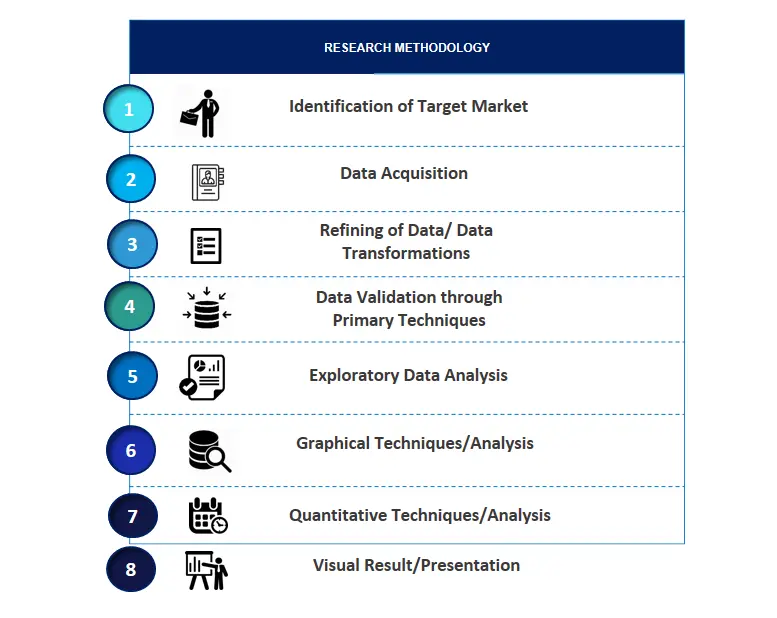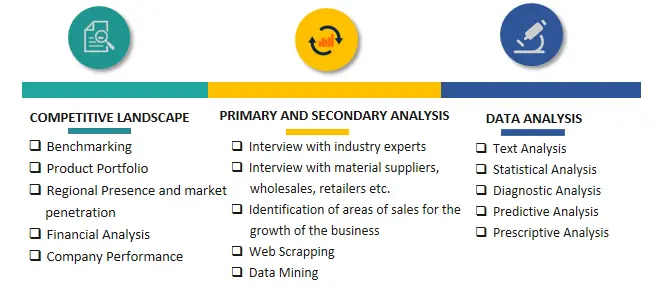
Asia Pacific Tire Market Growth, Size, Trends, Revenue, Share, Challenges and Future Outlook
Asia Pacific Tire Market Size- By Vehicle Type, By Type of Tire, By Price Category, By End User, By Distribution Channel- Regional Outlook, Competitive Strategies and Segment Forecast to 2033
| Published: Jan-2024 | Report ID: AMIN2426 | Pages: 1 - 154 | Formats*: |
| Category : Automotive & Transportation | |||
- Apollo Tyre introduced two tyre brands—Amperion for electric passenger cars and Wav for two-wheelers—in India in 2023.
- Continental introduced the ComfortContact CC7, a Continental tyre, in 2023 for the Asia-Pacific area, which includes Malaysia.


| Report Metric | Details |
| Market size available for years | 2019-2033 |
| Base year considered | 2022 |
| Forecast period | 2023-2033 |
| Segments covered | By Vehicle Type, By Type of Tire, By Price Category, By End Use, By Distribution Channel |
| Regions covered | Australia, China, India, Indonesia, Japan, Malaysia, Pakistan, South Korea, Thailand, Others |
| Companies Covered | Bridgestone Corporation, Continental AG, Goodyear Tire & Rubber Company, Hankook Tire & Technology Co., Ltd., Kumho Tire Co., Ltd., Michelin, Pirelli C. S.p.A., Sumitomo Corporation, Toyo Tire Corporation, Yokohama Tire Corporation, Others |
- Automobile Manufacturers
- Automotive Parts Distributors
- Automotive Service Centers
- Fleet Owners and Operators
- Logistics, Supply Chain Professionals
- Tire Retailers and Dealers
- Tire Manufacturers and Suppliers
- Import, Export Authorities
- Others
| By Vehicle Type: |
|
| By Type of Tire: |
|
| By Price Category: |
|
| By End Use: |
|
| By Distribution Channel: |
|
- Asia Pacific Tire Market Size (FY’2023-FY’2033)
- Overview of Asia Pacific Tire Market
- Segmentation of Asia Pacific Tire Market By Vehicle Type (Light Commercial Vehicles, Medium and Heavy Commercial Vehicles, Off-The-Road, Passenger Cars, Three- Wheelers, Two-Wheelers)
- Segmentation of Asia Pacific Tire Market By Type of Tire (Bias, Radial)
- Segmentation of Asia Pacific Tire Market By Price Category (Budget, Economy, Premium)
- Segmentation of Asia Pacific Tire Market By End Use (OEM, Replacement)
- Segmentation of Asia Pacific Tire Market By Distribution Channel (Chanel Partners, Direct Sales, Online)
- Statistical Snap of Asia Pacific Tire Market
- Expansion Analysis of Asia Pacific Tire Market
- Problems and Obstacles in Asia Pacific Tire Market
- Competitive Landscape in the Asia Pacific Tire Market
- Impact of COVID-19 and Demonetization on Asia Pacific Tire Market
- Details on Current Investment in Asia Pacific Tire Market
- Competitive Analysis of Asia Pacific Tire Market
- Prominent Players in the Asia Pacific Tire Market
- SWOT Analysis of Asia Pacific Tire Market
- Asia Pacific Tire Market Future Outlook and Projections (FY’2023-FY’2033)
- Recommendations from Analyst
1.1. Scope of the report1.2. Market segment analysis
2.1. Research data source2.1.1. Secondary Data2.1.2. Primary Data2.1.3. SPER’s internal database2.1.4. Premium insight from KOL’s2.2. Market size estimation2.2.1. Top-down and Bottom-up approach2.3. Data triangulation
4.1. Driver, Restraint, Opportunity and Challenges analysis4.1.1. Drivers4.1.2. Restraints4.1.3. Opportunities4.1.4. Challenges4.2. COVID-19 Impacts of the Asia Pacific Tire Market
5.1. SWOT Analysis5.1.1. Strengths5.1.2. Weaknesses5.1.3. Opportunities5.1.4. Threats5.2. PESTEL Analysis5.2.1. Political Landscape5.2.2. Economic Landscape5.2.3. Social Landscape5.2.4. Technological Landscape5.2.5. Environmental Landscape5.2.6. Legal Landscape5.3. PORTER’s Five Forces5.3.1. Bargaining power of suppliers5.3.2. Bargaining power of buyers5.3.3. Threat of Substitute5.3.4. Threat of new entrant5.3.5. Competitive rivalry5.4. Heat Map Analysis
6.1. Asia Pacific Tire Market Manufacturing Base Distribution, Sales Area, Product Type6.2. Mergers & Acquisitions, Partnerships, Product Launch, and Collaboration in Asia Pacific Tire Market
7.1. Asia Pacific Tire Market Value Share and Forecast, By Vehicle Type, 2023-20337.2. Light Commercial Vehicles7.3. Medium and Heavy Commercial Vehicles7.4. Off-The-Road (OTR)7.5. Passenger Cars7.6. Three- Wheelers7.7. Two-Wheelers
8.1. Asia Pacific Tire Market Value Share and Forecast, By Type of Tire, 2023-20338.2. Bias8.3. Radial
9.1. Asia Pacific Tire Market Value Share and Forecast, By Price Category, 2023-20339.2. Budget9.3. Economy9.4. Premium
10.1. Asia Pacific Tire Market Value Share and Forecast, By End Use, 2023-203310.2. OEM10.3. Replacement
11.1. Asia Pacific Tire Market Value Share and Forecast, By Distribution Channel, 2023-203311.2. Chanel Partners11.3. Direct Sales11.4. Online
12.1. Asia Pacific Tire Market Size and Market Share
13.1. Asia Pacific Tire Market Size and Market Share By Vehicle Type (2019-2026)13.2. Asia Pacific Tire Market Size and Market Share By Vehicle Type (2027-2033)
14.1. Asia Pacific Tire Market Size and Market Share By Type of Tire (2019-2026)14.2. Asia Pacific Tire Market Size and Market Share By Type of Tire (2027-2033)
15.1. Asia Pacific Tire Market Size and Market Share By Price Category (2019-2026)15.2. Asia Pacific Tire Market Size and Market Share By Price Category (2027-2033)
16.1. Asia Pacific Tire Market Size and Market Share By End Use (2019-2026)16.2. Asia Pacific Tire Market Size and Market Share By End Use (2027-2033)
17.1. Asia Pacific Tire Market Size and Market Share By Distribution Channel (2019-2026)17.2. Asia Pacific Tire Market Size and Market Share By Distribution Channel (2027-2033)
18.1. Asia Pacific Tire Market Size and Market Share By Region (2019-2026)18.2. Asia Pacific Tire Market Size and Market Share By Region (2027-2033)18.3. Australia18.4. China18.5. India18.6. Indonesia18.7. Japan18.8. Malaysia18.9. Pakistan18.10. South Korea18.11. Thailand18.12. Others
19.1. Bridgestone Corporation19.1.1. Company details19.1.2. Financial outlook19.1.3. Product summary19.1.4. Recent developments19.2. Continental AG19.2.1. Company details19.2.2. Financial outlook19.2.3. Product summary19.2.4. Recent developments19.3. Goodyear Tire & Rubber Company19.3.1. Company details19.3.2. Financial outlook19.3.3. Product summary19.3.4. Recent developments19.4. Hankook Tire & Technology Co., Ltd.19.4.1. Company details19.4.2. Financial outlook19.4.3. Product summary19.4.4. Recent developments19.5. Kumho Tire Co., Ltd.19.5.1. Company details19.5.2. Financial outlook19.5.3. Product summary19.5.4. Recent developments19.6. Michelin19.6.1. Company details19.6.2. Financial outlook19.6.3. Product summary19.6.4. Recent developments19.7. Pirelli C. S.p.A.19.7.1. Company details19.7.2. Financial outlook19.7.3. Product summary19.7.4. Recent developments19.8. Sumitomo Corporation19.8.1. Company details19.8.2. Financial outlook19.8.3. Product summary19.8.4. Recent developments19.9. Toyo Tire Corporation19.9.1. Company details19.9.2. Financial outlook19.9.3. Product summary19.9.4. Recent developments19.10. Yokohama Tire Corporation19.10.1. Company details19.10.2. Financial outlook19.10.3. Product summary19.10.4. Recent developments19.11. Others
SPER Market Research’s methodology uses great emphasis on primary research to ensure that the market intelligence insights are up to date, reliable and accurate. Primary interviews are done with players involved in each phase of a supply chain to analyze the market forecasting. The secondary research method is used to help you fully understand how the future markets and the spending patterns look likes.
The report is based on in-depth qualitative and quantitative analysis of the Product Market. The quantitative analysis involves the application of various projection and sampling techniques. The qualitative analysis involves primary interviews, surveys, and vendor briefings. The data gathered as a result of these processes are validated through experts opinion. Our research methodology entails an ideal mixture of primary and secondary initiatives.



Frequently Asked Questions About This Report
PLACE AN ORDER
Year End Discount
Sample Report
Pre-Purchase Inquiry
NEED CUSTOMIZATION?
Request CustomizationCALL OR EMAIL US
100% Secure Payment






Related Reports
Our Global Clients
Our data-driven insights have influenced the strategy of 200+ reputed companies across the globe.




















